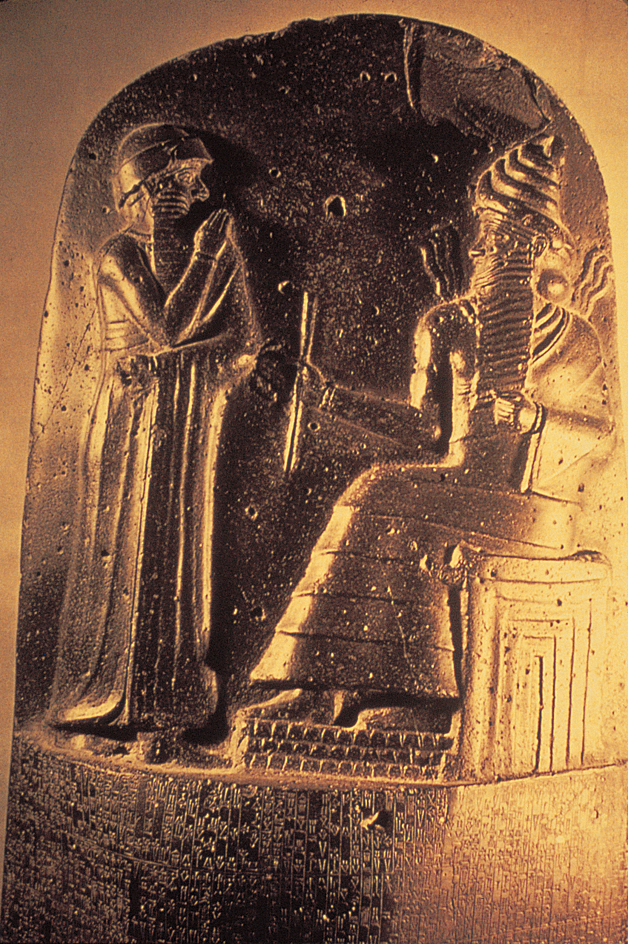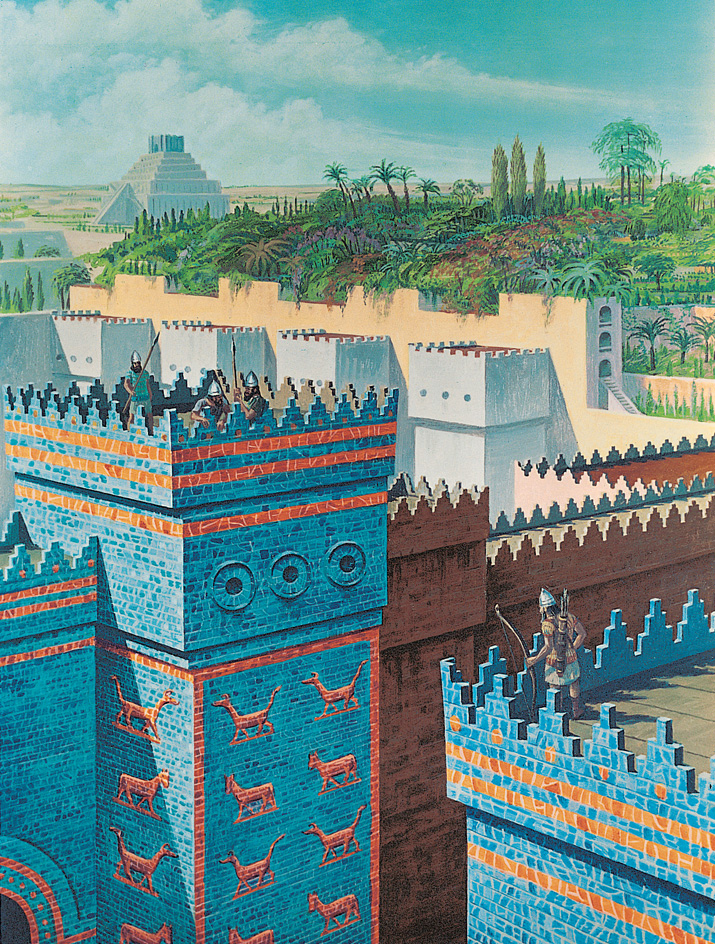Babylon << BAB uh luhn or BAB uh `LAHN` >> was a great city of the ancient world. It stood on the banks of the Euphrates River near present-day Al Hillah, Iraq. Babylon was the capital and a major religious center of the ancient region of Babylonia.

The Old Babylonian period.
Babylon was a minor administrative center in the late 2000’s B.C. The city gained new prominence about 1894 B.C., when the Amorite leader Sumu-abum founded a new dynasty of tribal Amorite kings. This dynasty ruled Babylon for 300 years. For most of that time, Babylon, like several competing small kingdoms, controlled a handful of small cities nearby.
Little is known about Babylon during the Old Babylonian period because most of the archaeological evidence lies beneath water underground. However, Babylon probably resembled other, better-known cities of the time, with a magnificent palace and a number of temples, including a large temple complex for the god Marduk. Private houses lined the city’s narrow, twisting streets. A typical house had a central courtyard surrounded by rooms. A large wall defended the city from invaders. The wall had several gates, where merchants traded goods. Babylonian traders traveled west to Syria and other countries, north to Assyria, and south to kingdoms along the Persian Gulf. They often traded textiles and grain for gold, silver, and precious stones.
The best-known king of the dynasty founded by Sumu-abum was Hammurabi, who ruled from 1792 to 1750 B.C. Hammurabi conquered nearly every competing kingdom during the 1760’s B.C. and greatly expanded Babylonian territory. For about 25 years, Hammurabi and his son Samsuiluna controlled an area that extended south to the Persian Gulf and north along the Euphrates.

Hammurabi is famous for a collection of laws that he assembled. Historians now believe this Code of Hammurabi to be a set of examples of wise decisions made by the king rather than absolute laws. The code provides a picture of Babylonian society. Babylon’s population consisted of classes of free citizens, partially free dependents, and slaves. Men and women of all classes enjoyed some degree of legal rights regarding their property, credit, and families, as well as protections from crime and false testimony. Under the code, slaves could buy their freedom, and free women could own property and conduct business on their own behalf. Most citizens were involved in agriculture, but the code also mentions merchants, craftworkers, soldiers, priestesses, and royal officials.
The dynasty founded by Sumu-abum lost most of its territory about 15 years after Hammurabi’s death. Babylon returned to being a small state about 1725 B.C. In 1595 B.C., a Hittite raid destroyed the city. Historians know little about Babylon during the 150 years following this raid. Babylon reemerged about 1450 B.C. as an important political and cultural center under the Kassite dynasty, which lasted until about 1155 B.C.
About 850 B.C., the Assyrians began interfering in the royal succession at Babylon. The Assyrian Empire took direct control of Babylon several times from 745 to 650 B.C., but the city resisted Assyrian rule. In 689 B.C., King Sennacherib of Assyria destroyed Babylon in revenge for the murder of his son, who had been serving as king of the city. Another son, Esarhaddon, rebuilt Babylon soon after becoming king in 680 B.C.
The Neo-Babylonian Empire
began in 626 B.C., when the military leader Nabopolassar, probably a Chaldean, became king of Babylon. Nabopolassar won control of Babylonia from the Assyrians. Then, from 612 to 609 B.C., he aggressively attacked Assyria with the aid of allies from Media. These attacks resulted in the end of the Assyrian Empire, and Nabopolassar gained control of Assyrian territory in present-day Syria, Israel, Lebanon, and Egypt. He ruled until his death in 605 B.C.
Babylon achieved its greatest glory under Nabopolassar and his son Nebuchadnezzar II, who rebuilt the city on a grand scale. During the reign of Nebuchadnezzar (605-562 B.C.), workers constructed thick defensive walls and a moat around Babylon. People entered and left the city through eight bronze gates in the walls. The grandest of these, the Ishtar Gate, was on the north side of the city. Figures of dragons, lions, and bulls made of glazed colored brick decorated the gate and nearby walls.
The Euphrates River flowed from north to south through the center of Babylon, which was shaped like a rectangle. The city’s major structures stood east of the river. They included a royal palace, two fortresses, the Temple of Marduk, and a ziggurat (pyramid-shaped tower). A paved avenue called the Processional Street, parallel to and east of the river, led from the Temple of Marduk to the site of a great religious festival north of the city. It passed out of the city through the Ishtar Gate. The ancient Greeks wrote about elevated gardens they called the Hanging Gardens of Babylon. However, evidence of the gardens has never been found in Babylon’s ruins.
As many as 200,000 people may have lived in Babylon and its suburban communities. Agriculture and manufacturing flourished in the city. During this period, Babylon developed investment and banking markets which became the most important in the world.

The fall of Babylon.
Nebuchadnezzar’s successors were unpopular, and quarrels over the royal succession weakened the empire. In 539 B.C., Persian invaders captured Babylon and overthrew the Neo-Babylonian Empire. Babylonia then became the wealthiest province of the Persian Empire. In 331 B.C., the Macedonian military leader Alexander the Great gained control of Babylon. When Alexander died in 323 B.C., one of his generals, Seleucus, became king of Babylonia and lands around it. Seleucus founded Seleucia, a new capital, on the Tigris River. Gradually, Babylon became deserted.
The ruins of Babylon.
Medieval Arab geographers preserved some knowledge of Babylon. From A.D. 1899 to 1917, German archaeologists uncovered much of Babylon’s ruined palace and temple areas, a residential area, and the city walls. Most of the remains dated from the Neo-Babylonian period. In the 1980’s, Iraq’s government began restoring some Babylonian structures, but wars interrupted the restoration.
